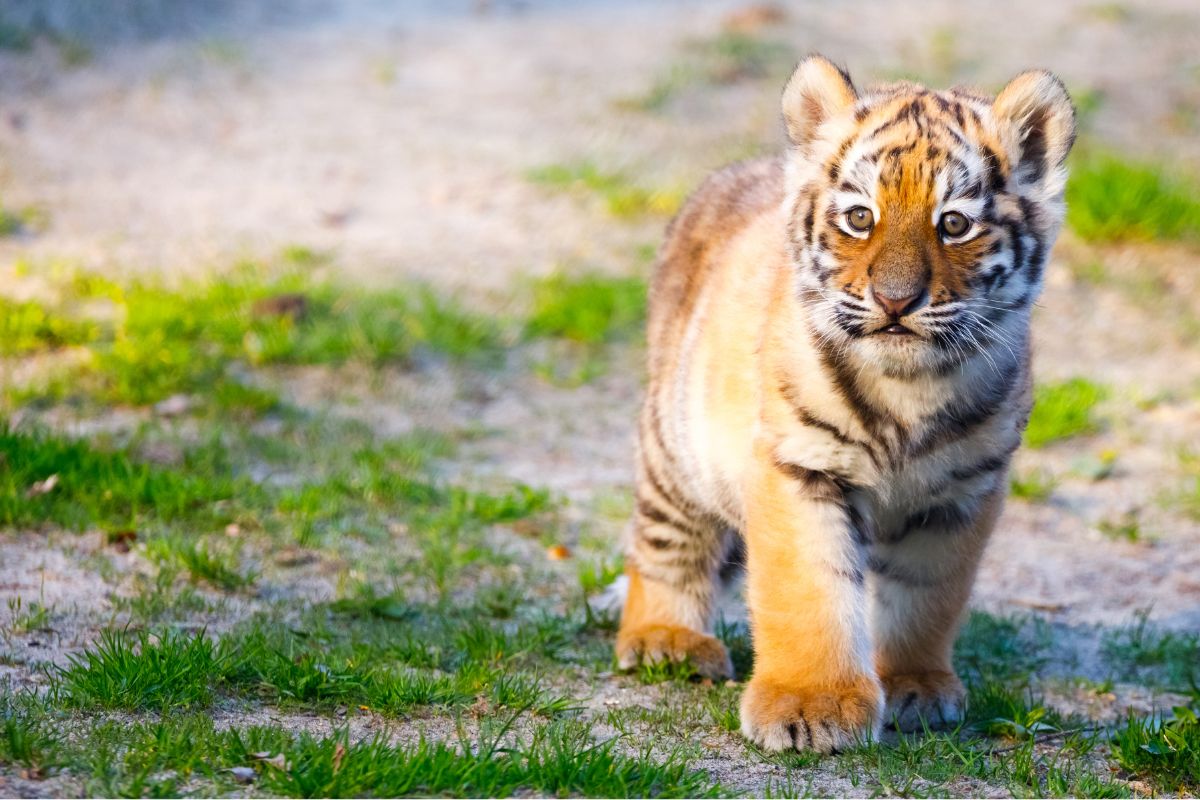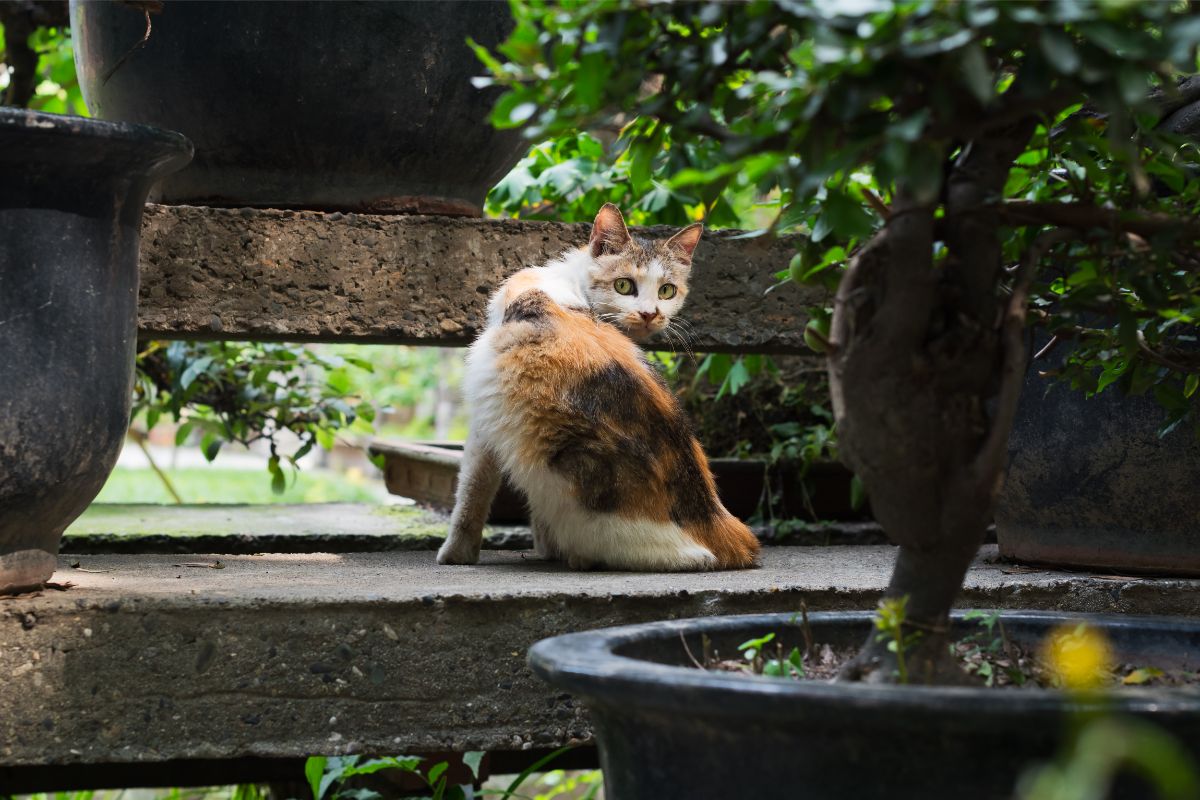Tigers are the largest species of cat in the world. The big cat is also up there with the fiercest predators on Earth. Incredibly beautiful as well as super-strong, the tiger has long had deep meanings and beliefs in Japanese culture.

Along with the dragon, Japanese culture believes that tigers govern elemental forces, ruling the cosmos and the natural world. It is believed that the two creatures bring blessings of peace and rain to the country.
However, does Japan actually have any tigers? The fact you’ve landed on this page would suggest you don’t know the answer to this question, but seek the answer.
If so, you’re in luck.
In this post, we’ll tell you all you need to know about Japan and whether it has any tigers.
Keep reading if you want to learn more!
So, Are There Tigers In Japan?
Let’s get straight to the point, no, there are no tigers in Japan. Despite the tiger having such popularity in Japanese culture, literature, and poetry, there isn’t a single tiger in Japan living outside of captivity.
This may come as a surprise to you as the tiger is so highly thought of in the country and due to the fact so many other Asian countries have a wild tiger population.
The likes of China, Laos, Nepal, Vietnam, India, Indonesia, Malaysia, Bhutan, and Bangladesh all have tigers. Some even have multiple species of tiger.
The main reason there are no tigers in Japan is that they simply aren’t native to the country. This is in part because the country is an island. Having said that, this doesn’t mean tigers didn’t once live in Japan many, many years ago.
Have Tigers Ever Lived In Japan?
It is widely believed that there was a time when tigers roamed across Japan. They are believed to have been in Japan when the country was still connected to the eastern side of the Asian continent.
During this time, which took place roughly 2.6 million years ago, Japan was connected to Sakhalin and Korea. Sakhalin was connected to Russia’s mainland at the time and more importantly the Amur River Basin (home to the Siberian tiger).
It is via these land bridges that connected eastern Asia that tigers made their way to Japan.
The type of tiger that is thought to have inhabited Japan at the time was the Wanhsien tiger. This type of tiger lived during the Pleistocene era, which started 2.6 million years ago and ended almost 12,000 years ago.
This is the last time tigers will have been in Japan. In fact, no humans ever came into contact with them.
What Happened To Japan’s Tigers?
Japan’s tigers are believed to have looked similar to the small Balinese tiger and sadly became extinct 12,000 years ago.
Unlike other species of tiger which are led to extinction as a result of poaching and traditional medicines, Japan’s tiger went extinct simply because of rising sea levels.
The rising sea levels cut this species of tigers off from others, making it impossible for them to colonize the Japanese islands.
This lack of colonization led to a decline in the number of tigers until they sadly became extinct. Fossil findings would suggest that Japan’s tigers may have been the first subspecies of tigers to ever become extinct.
Why Are Tigers So Popular In Japanese Art And Culture?
You might find yourself wondering why on Earth the tiger is so popular in Japanese culture when they were never native to the country?
The reason for this popularity is a result of the artists that worked at Kano art school. These artists were commissioned by Shogun Tokugawa Ieyasu to depict the beautiful creatures ready for display on the walls of Nijo Castle in Kyoto. At the time this was Japan’s Capital.

Since then, tigers have been used in decoration throughout Japan, with meanings and beliefs about what they represent growing and changing over time.
Now, the tiger holds significant meaning in Japanese culture, with many people using the tiger in poetry, art, and literature. The tiger is also commonly used to explain Japanese history (see also ‘Early Japanese History And How It Shaped The Country To This Day‘).
Like we said at the beginning of this post, the tiger is also seen as a ruler of the cosmos and the natural world, capable of controlling elemental forces and bringing blessings of peace and rain.
Bad Artwork
One thing you may notice with Japanese artwork that depicts the tiger, particularly with the earliest depictions is how strange the tiger looks. The reason for this is quite interesting and surprisingly obvious when we think about it.
The artists that originally painted the tigers had never actually seen a tiger in real life. They were often working with how they were described. This resulted in a lot of depictions that showed the tiger to be an oversized domestic cat with stripes.
They would typically look a lot cuter and more cuddly too.
Does Japan Have Any Wild Cats?
While Japan may not have any wild tigers, they do have another type of wild cat, known by the name Tsushima leopard cat.
The Tsushima leopard cat is approximately the same size as most domestic cats, weighing up to 5 kg and reaching lengths of 80 cm. Females tend to be a little smaller than males. This species of cat has a browny-blonde body and a flat tail.
Typically living off small terrestrial vertebrates and insects, the Tsushima leopard cat inhabits the island of Iriomote and Okinawa.
In Summary
Despite being incredibly important in Japanese culture, literature, poetry, and art, Japan doesn’t have any tigers living in the wild. The only places you’ll find a tiger in Japan are in zoos.
However, the Wanhsein tiger did live in Japan over 12,000 years ago when Japan was connected to the eastern side of the Asian continent. Sadly, it became extinct 11,000 years ago.
Having made your way through our post, you should now know all there is to know about Japan and tigers. While there may not be any tigers to observe, the Tsushima leopard cat is well worth keeping your eyes out for.
- 16 Best Websites To Watch Japanese Movies With English Subtitles - May 11, 2023
- Is ZIPAIR The Best Airline For Traveling To Japan? - May 11, 2023
- Ryu Murakami Vs Haruki Murakami – Which One Should You Read? - May 11, 2023



![Native & Wild Animals That Live In Japan [Wildlife Guide] Native & Wild Animals That Live In Japan [Wildlife Guide]](https://justaboutjapan.com/wp-content/uploads/2022/09/Native-Wild-Animals-That-Live-In-Japan-150x150.jpg)




